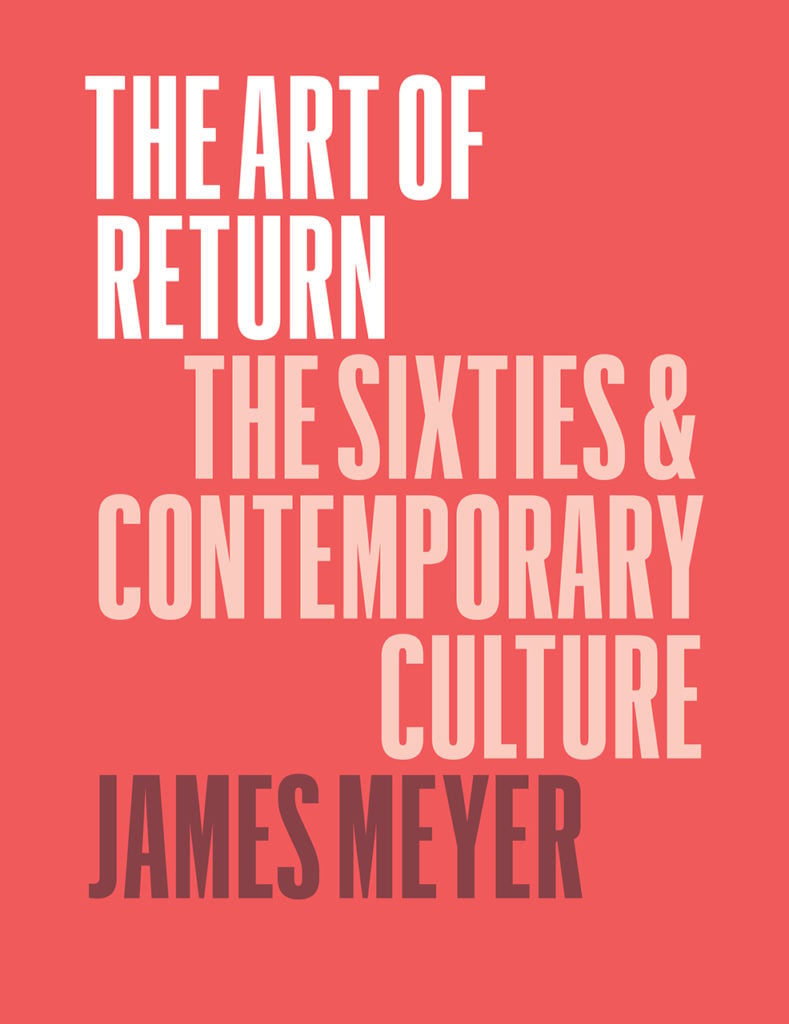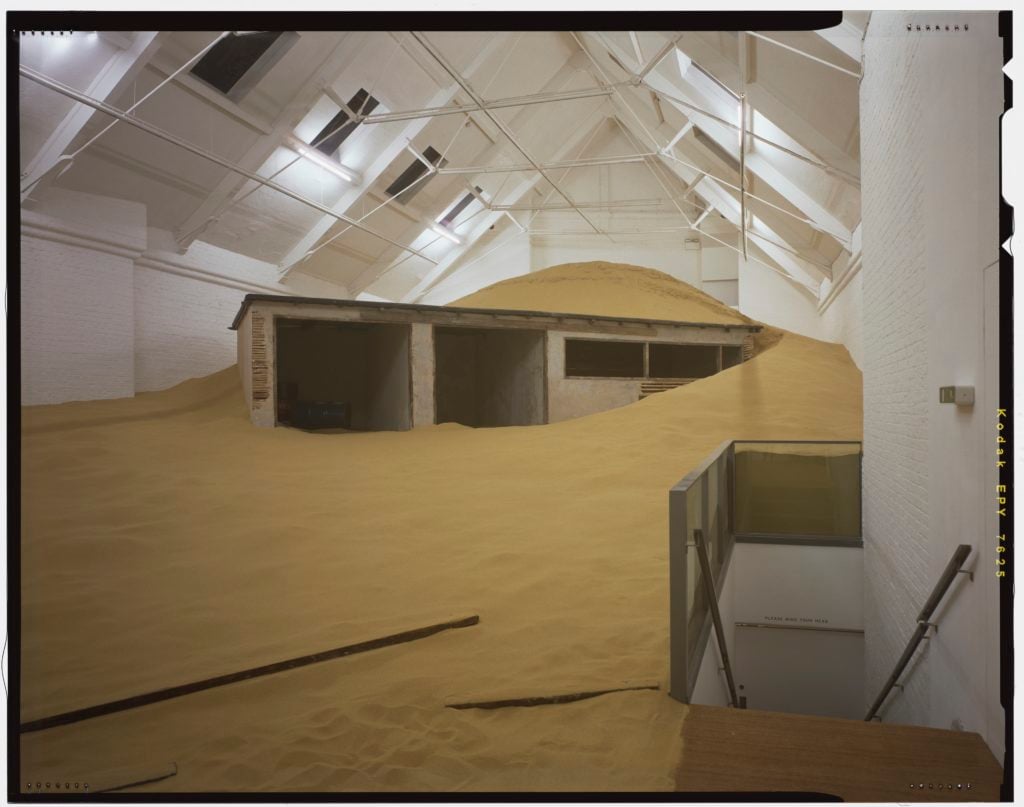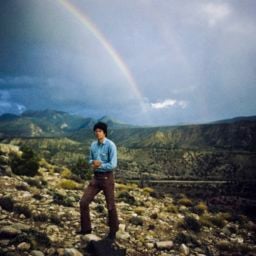A quarter-century after his death in an airplane crash in the West Texas desert, Robert Smithson re-emerged as a figure of contemporary sensibility. Beginning in the ’90s, Smithson excited the sort of devotion that certain painters and poets do after their deaths. He became a figure of special interest to artists and scholars too young to have seen his works when he made them, and to have read his writings when they were first published in the pages of Artforum.
We had missed Smithson, but not entirely. Our acquaintance was one step removed. I met an artist who had interviewed him for her master’s thesis, and befriended another who shared the memory of Smithson arguing with Carl Andre into the early morning at Max’s Kansas City, and frequenting the bar’s back room, where a Flavin sculpture cast a whorehouse glow on the red tablecloths and napkins and glamorous patrons—Warhol and his Superstars. Someone else pointed out the building where Smithson had lived with his wife Nancy Holt in Manhattan’s meatpacking district at a time when the cobblestone streets, now lined with designer emporia, reeked of blood and rotting organs and garbage, and the crumbling piers on the river were places of crime and illicit pleasure.
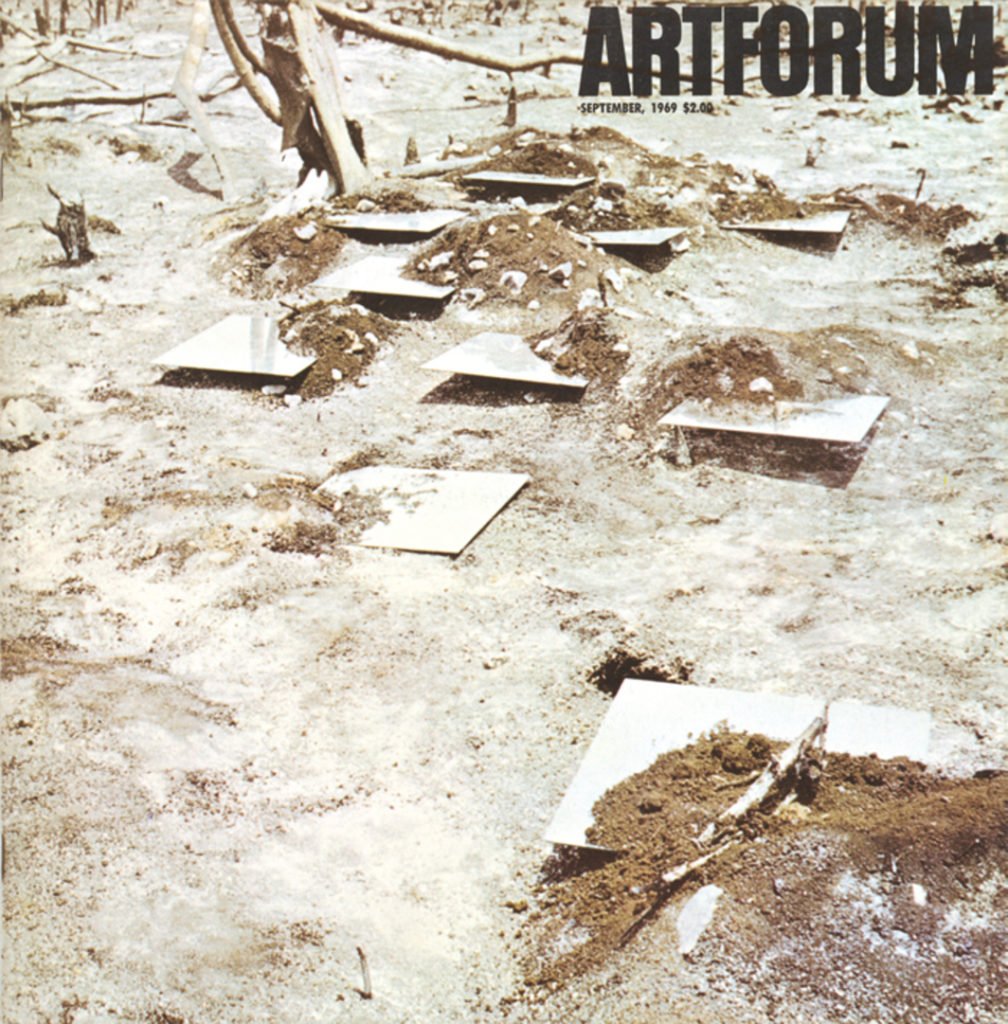
Robert Smithson’s work on the cover of the September 1969 edition of Artforum.
These were passing glimpses, snapshots; they did not yet make up a composite image. During this period, when I began my doctoral dissertation, the long Sixties had slipped into the past. The fall of Saigon and the German Autumn had occurred just 15 years earlier; to a young person these events felt like ancient history. Yet the more I researched that time, the closer it seemed. The more I returned, it returned; the more I identified with it, the more I felt part of it. Many of Smithson’s contemporaries were still alive and working then. I wrote letters to them, requested interviews. I visited their studios and houses, and took meals with them. I wrote down their remarks sedulously. I drew out their confidences.
I brought a cassette recorder along to these visits. My index finger pressed the “On” button, and the tiny wheels of brown magnetic tape turned silently, capturing the patter of our conversation. I wrote down their memories, and my memories of them, such as the recollection by an important artist of a dismissive review of his first show (he never forgave the critic), and the patronizing responses of the artist-writer Donald Judd to the work of many of his peers. (It mattered little that the individuals recalling these slights 30 years after the fact were world famous: the put-downs we experience in our youth leave a mental stain it is impossible to wash away.) And if the machine ran out of tape or was turned off at the interviewee’s insistence, the taping device in my brain was very much “on.” In my determination to develop my expertise, I fashioned myself into a sort of recording device, a memory machine, as if my ears were microphones and the retinas in my eyes were delicate plates coated with photosensitive emulsion. Those remarks and those images, those recollections of triumphs and slights, were stamped in my mind instantly and forever. I gathered these perceptions greedily, stuffed them in my pockets. I hoarded them like little stones.
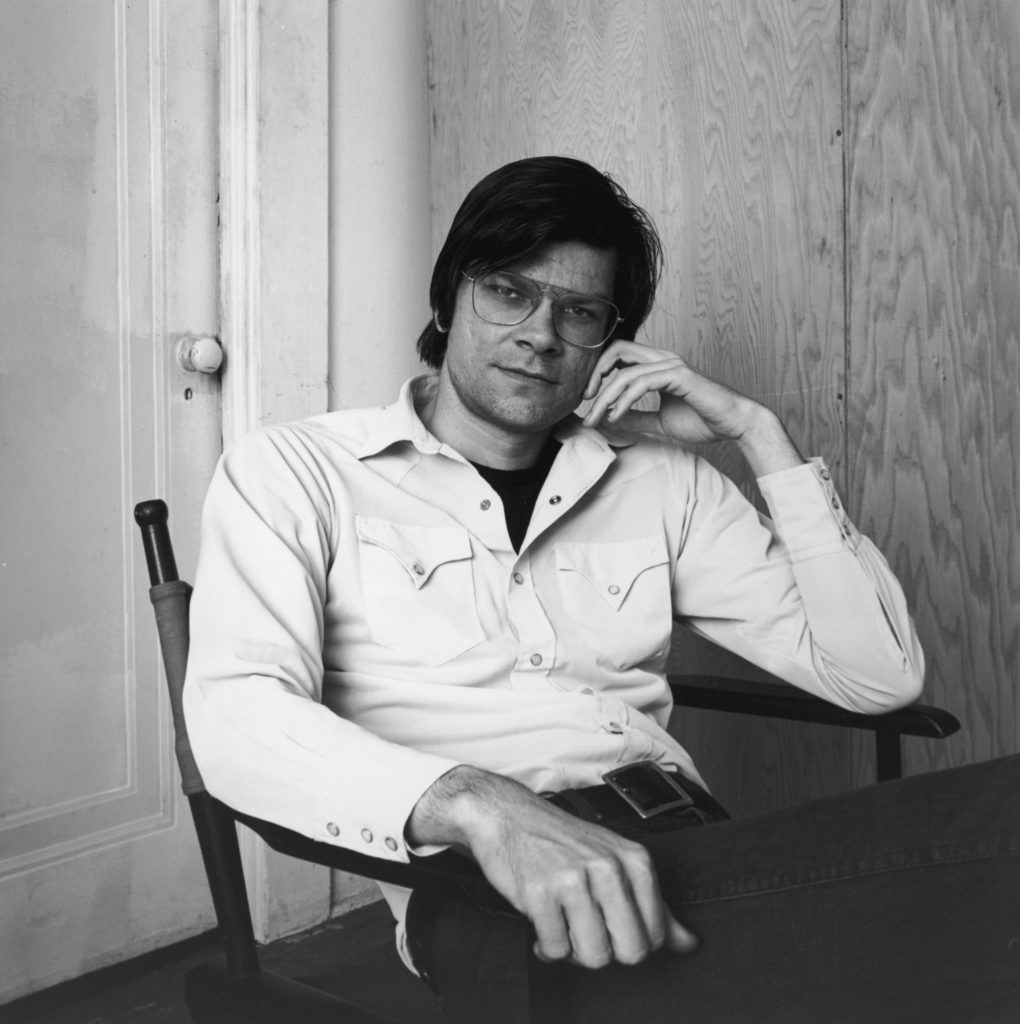
American sculptor and artist Robert Smithson, photographed on November 7, 1969. Photo by Jack Robinson/Hulton Archive/Getty Images.
Memories of the dead were the most precious of all. Smithson had died young. Eva Hesse and Gordon Matta-Clark had died young. As had so many others. The works of these artists had become pivotal references of a burgeoning field called “contemporary art history.” Many of these projects were meant to last for a short time; others had decayed beyond recognition, become ruins of their former selves. We could reconstruct these works from archival photos and reviews, but we would never see them as they had been seen. We would never know them for ourselves. And if the artist had died young, we would never know him or her. That awareness—that we would never speak to Smithson, Hesse, or Matta-Clark, would never hear artists like Jimi Hendrix or Janis Joplin live—inspired a longing unique to the scholar of the recent past, a desire to know a person one might have known, or to experience their art new. (As Reinhart Koselleck would say, our “historical times” overlapped, our “biological times” did not.) As I set out to write the history of the Minimalists and Post-Minimalists—the so-called greatest generation of American artists—I came to identify not a little with the narrator of Henry James’s ravishing novella The Aspern Papers, whose fervent desire to “know” a dead poet of a previous era has become the motivating force of his scholarship, and comes to dominate his entire existence—a mnemonic longing so intense it makes it impossible for him to live fully in his own time.
The fictional poet Jeffrey Aspern was a leading light of literary Romanticism. When James’s story begins, at the end of the 19th century, Aspern’s work is in the midst of a revival; it is “a part of the light in which we walk,” the narrator, a young enthusiast, observes. Aspern’s death at the height of his abilities has only enhanced his reputation. He is recalled as a genius who died too soon; an aura surrounds his name. Aspern remains forever young, handsome, and gifted. He did not live long enough to lose his inspiration. He is a figure of infinite expectation, about whom one can say: What more would he have achieved?
James’s narrator venerates Aspern, and the time when Aspern lived. The poet emerged “when the century was young”; that era appears infinitely more energetic and important than the narrator’s present moment. The age of Aspern is what Nietzsche calls monumental history: Aspern’s talent was nourished in this fertile soil. Like Nietzsche’s antiquarian who is always gazing backward, the young nostalgic of James’s story pines for a period he has missed. In his effort to “know” Aspern, the scholar attempts to ingratiate himself with Aspern’s aging mistress and her niece in order to procure Aspern’s papers—the letters the poet wrote to her when she was young, now hidden in her desk. Yet his unscrupulous actions only catalyze the destruction of these precious letters, and the old woman’s death.

Sam Durant, What’s the Opposite of Entropy? (1999). Like Triple Bluff Canyon, the work revisits Robert Smithson’s Partially Buried Woodshed (1970). Photograph courtesy of Sam Durant.
When I met them, Smithson’s peers had reached an advanced and (for the most part) contented middle age. They had lived long enough to develop the implications of their early work, and in many instances they had challenged the rigorous precepts and sober formality of their classic styles. When I tried to imagine Smithson (the portrait of the artist in my mind was becoming clearer, more recognizable), I did not think of a historical person, as James’s narrator describes Aspern, whose portrait shows a young man in a high-collared green coat and a buff waistcoat, the antiquated dress of the early 19th century. No: Smithson felt insistently present during the ’90s. His death did not seem as distant as the most famous Sixties tragedies, such as the assassinations of the Kennedys, Patrice Lumumba, and Martin Luther King, Jr. It was an event that his friends still mourned. In their company, it felt as if he had died not so long ago.
On July 20, 1973, Smithson went out with a pilot and photographer in a two-propeller Beechcraft Baron to stake out the site of an earthwork at the edge of an artificial lake on a ranch outside of Amarillo. The summer afternoon was clear and bright. The desert shimmered in the heat. The whirring sound of propellers mixed with the hot air as the plane ascended.
We don’t know what happened next. In my imagination one of the engines sputtered, and the pilot’s attention was diverted. One of the wings dipped. At some point Smithson and the others realized what was about to happen. Then the plane rammed into a rocky hill a few hundred yards from the location where Smithson planned to build his work, and the men died instantly. The news reached New York that afternoon.
Reproduced with permission from The Art of Return: The Sixties and Contemporary Culture by James Meyer, published by the University of Chicago Press. © 2019 by The University of Chicago. All rights reserved.
